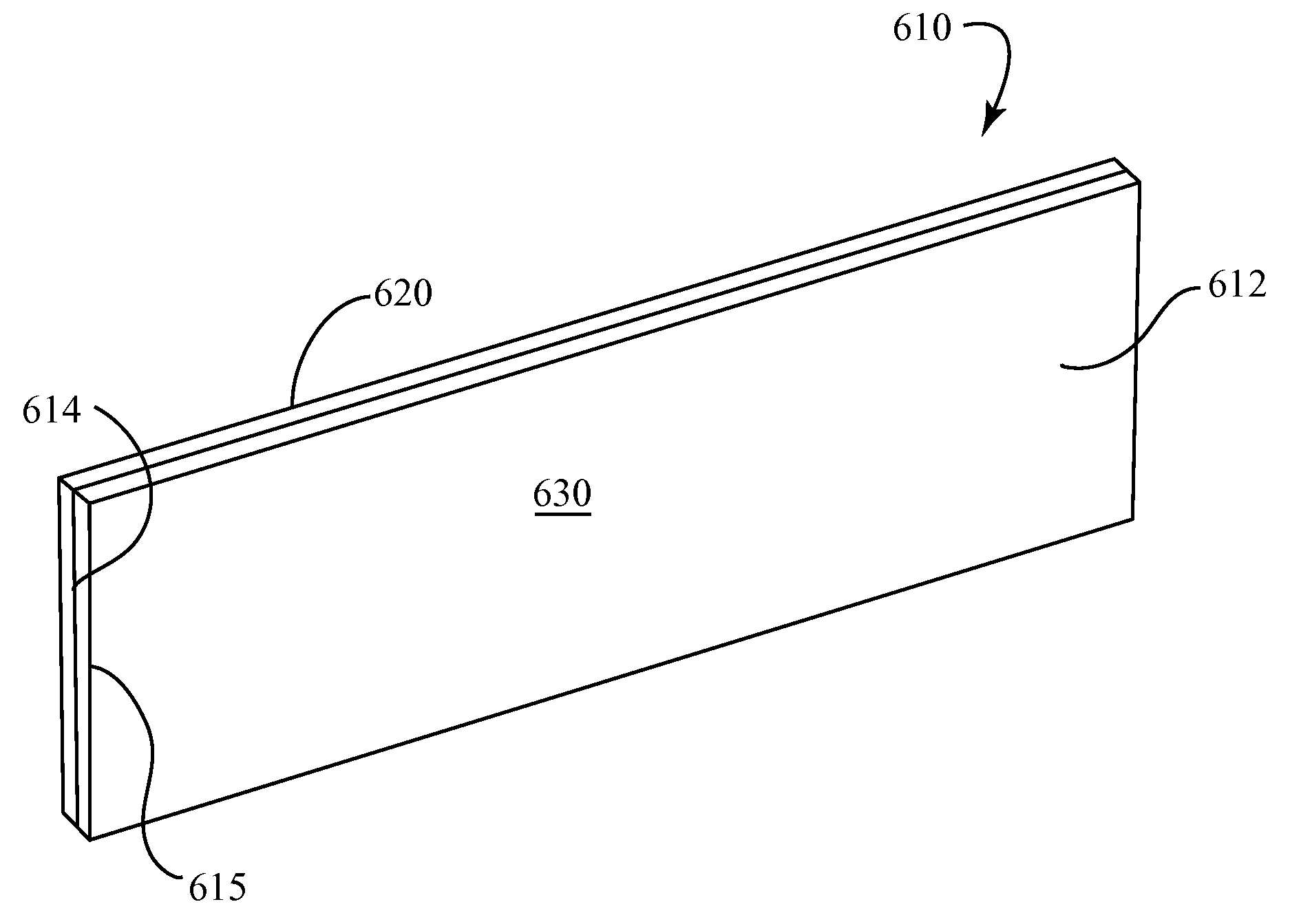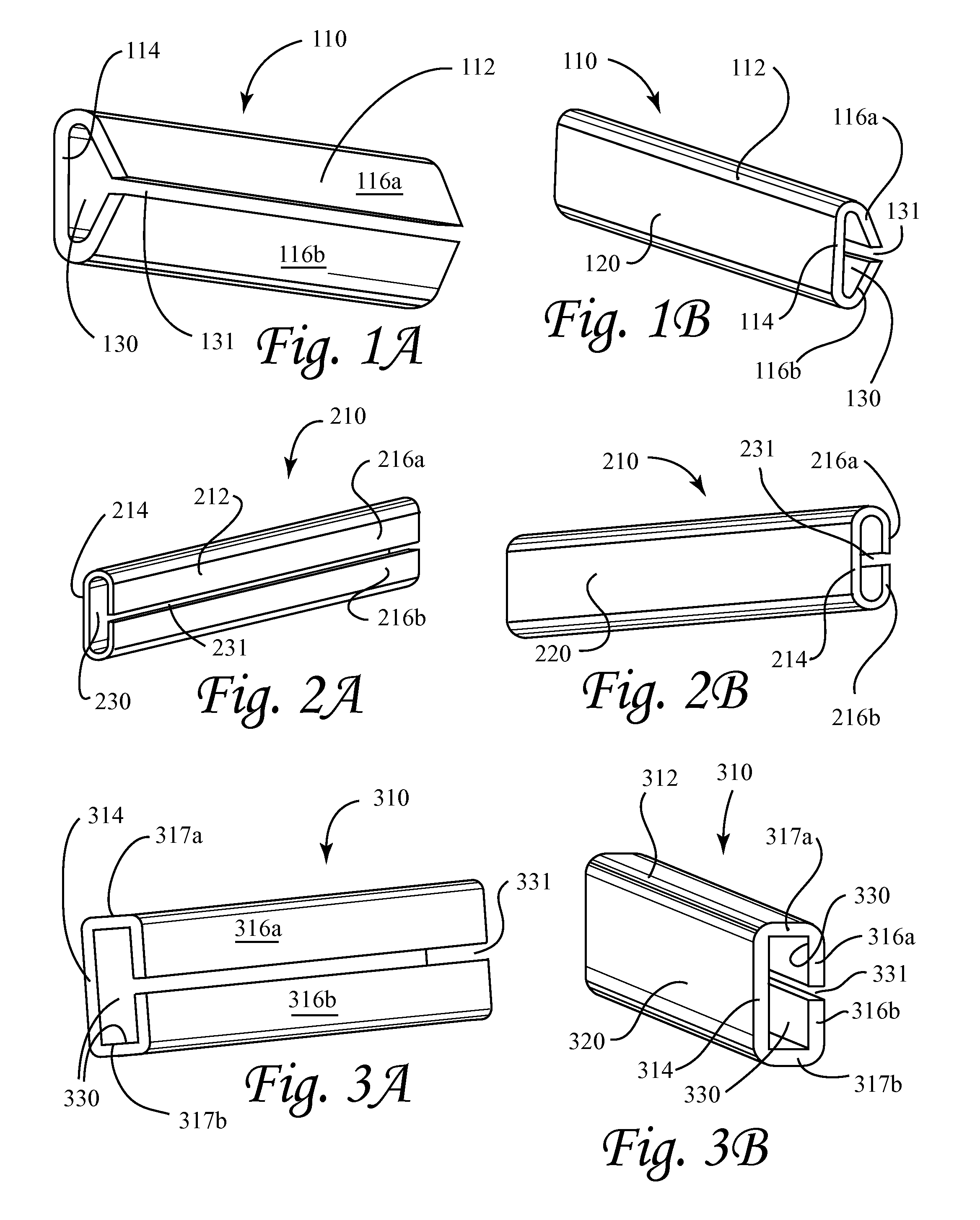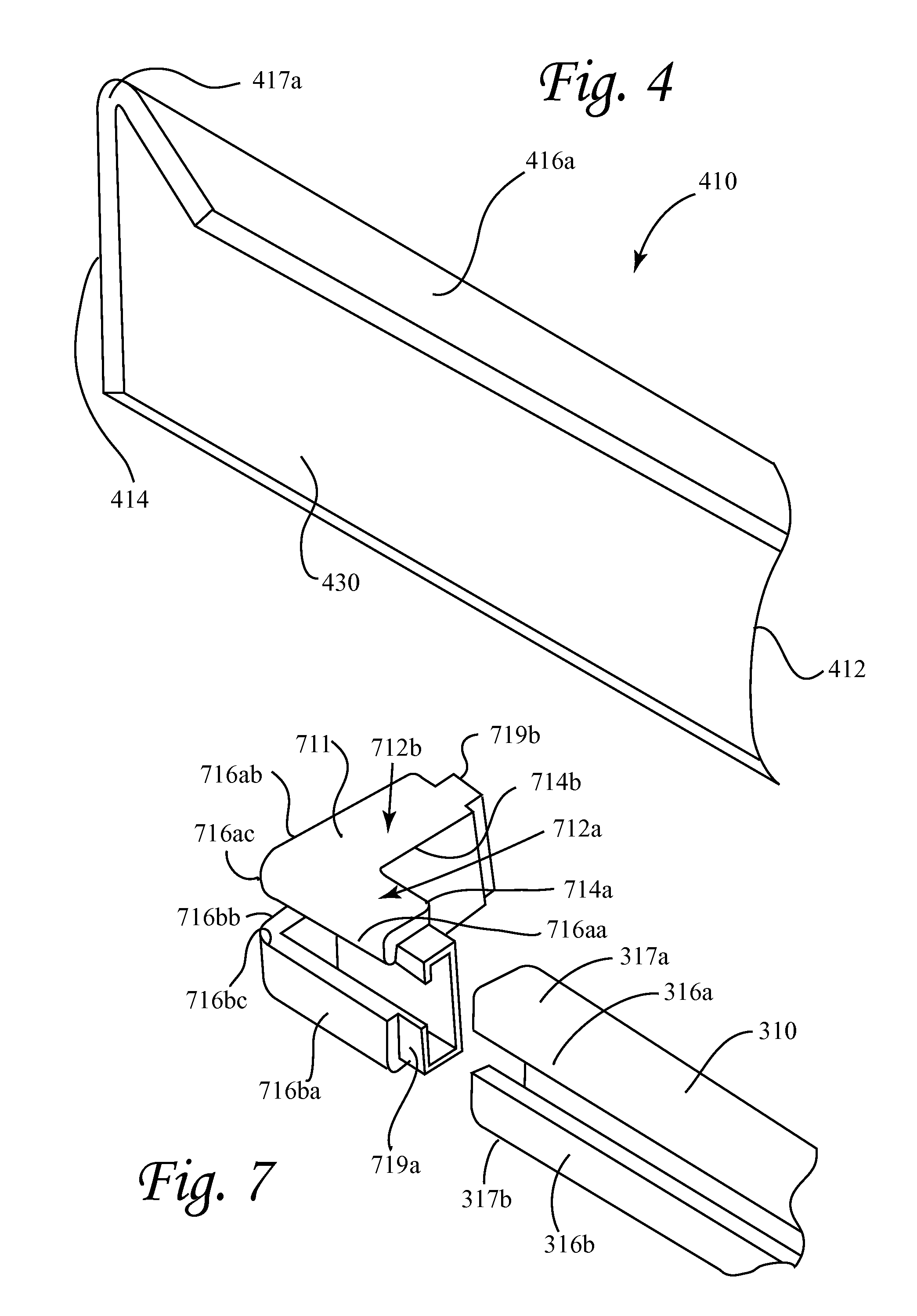Systems, Devices, and Methods for Protection From Bedbugs
a bedbug and bed frame technology, applied in the field of bedbug protection, can solve the problems of easy for a person to see inside, and achieve the effect of not unsightly, convenient attachment to bed frames, and not unsightly
- Summary
- Abstract
- Description
- Claims
- Application Information
AI Technical Summary
Benefits of technology
Problems solved by technology
Method used
Image
Examples
first embodiment
[0021]a bedbug protective device 110 is seen in FIGS. 1A and 1B. Device 110 includes a carrier material 112 preferably formed of rubber or polymer which is formed with a cross-section in the general shape of a triangular “C” with a back 114 and front lips 116a, 116b defining a channel. At least a portion of the carrier material 112 along its entire length, and preferably, the entire carrier material 112 is impregnated with a bedbug repellent or insecticide adapted to repel bedbugs such as geraniol (and particularly the geraniol, geraniol precursor, or beta-geraniol glucocide substance described in the Background of U.S. Pat. No. 5,633,236 to Warren et al.), DEET, pyrethroid, or other repellent and / or insecticide selected from the EPA 25b and 4A inert lists, including but not limited to oils of citronella, peppermint, cedar, lemongrass, or soybean, or substances such as 1,8-cineol (1,3,3-trimethyl-2-oxabicyclo[2.2.2]octane, Para-menthane-3,8-diol (PMD), citronellol (3,7-dimethyl-oct-...
second embodiment
[0025]a bedbug protective device 210 is seen in FIGS. 2A and 2B. Other than its shape, device 210 is substantially the same as device 110, and like parts of device 210 are denoted with like numerals except “100” larger. Thus, device 210 includes a carrier material 212 preferably formed of a molded or extruded relatively flexible rubber or polymer which is formed with a cross-section generally in the shape of an oblong “C” with a back 214, and with front lips 216a, 216b connected to back 214 by rounded top and bottom portions 217a, 217b. The carrier material 212 is impregnated with a bedbug repellent or insecticide as previously described. The back 214 of the carrier 212 is preferably flat and is provided with an adhesive strip 220 which will permit the device 210 to be readily attached to bed frames, bed posts, head boards, mattresses, furniture, baseboards, floors and walls. The inside of carrier 212 provides a channel at least a portion of whose surface is preferably coated with a...
third embodiment
[0027]a bedbug protective device 310 is seen in FIGS. 3A and 3B. Other than its shape, device 310 is substantially the same as device 110, and like parts of device 310 are denoted with like numerals except “200” larger. Thus, device 310 includes a carrier material 312 preferably formed of a molded or extruded relatively flexible rubber or polymer which is formed with a cross-section generally in the shape of a rectangular “C” with a back 314, and with front lips 316a, 316b that are connected to the back 314 by generally flat top and bottom portions 317a, 317b. The carrier material 312 is impregnated with a bedbug repellent or insecticide as previously described. The back 314 of the carrier 312 is preferably flat and is provided with an adhesive strip 320 which will permit the device 310 to be readily attached to bed frames, bed posts, head boards, mattresses, furniture, baseboards, floors and walls. If desired, in addition to or instead of adhesive strip 320, an adhesive strip (not ...
PUM
 Login to View More
Login to View More Abstract
Description
Claims
Application Information
 Login to View More
Login to View More - R&D
- Intellectual Property
- Life Sciences
- Materials
- Tech Scout
- Unparalleled Data Quality
- Higher Quality Content
- 60% Fewer Hallucinations
Browse by: Latest US Patents, China's latest patents, Technical Efficacy Thesaurus, Application Domain, Technology Topic, Popular Technical Reports.
© 2025 PatSnap. All rights reserved.Legal|Privacy policy|Modern Slavery Act Transparency Statement|Sitemap|About US| Contact US: help@patsnap.com



